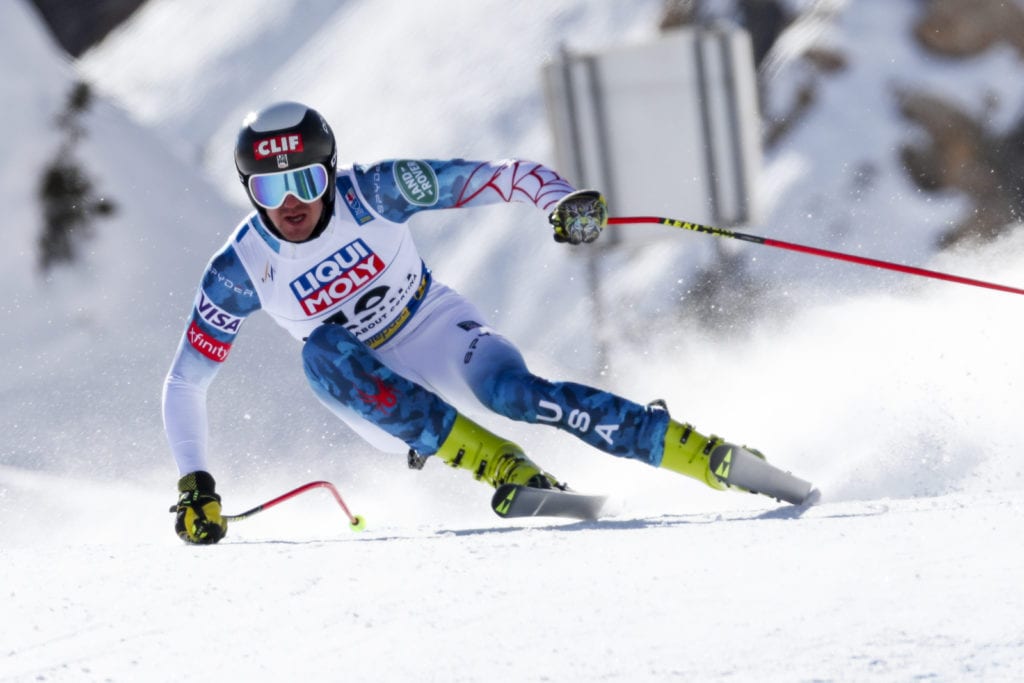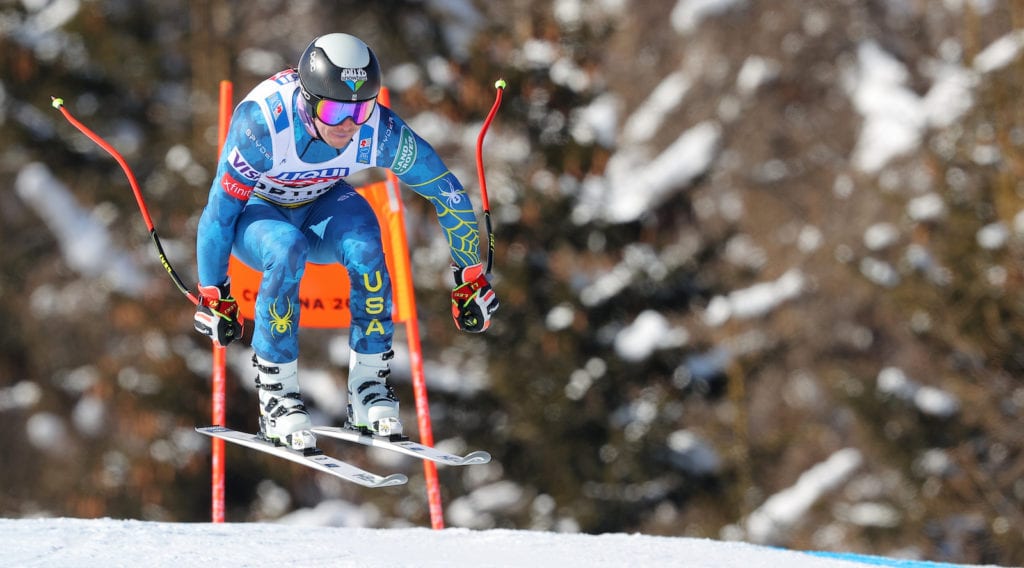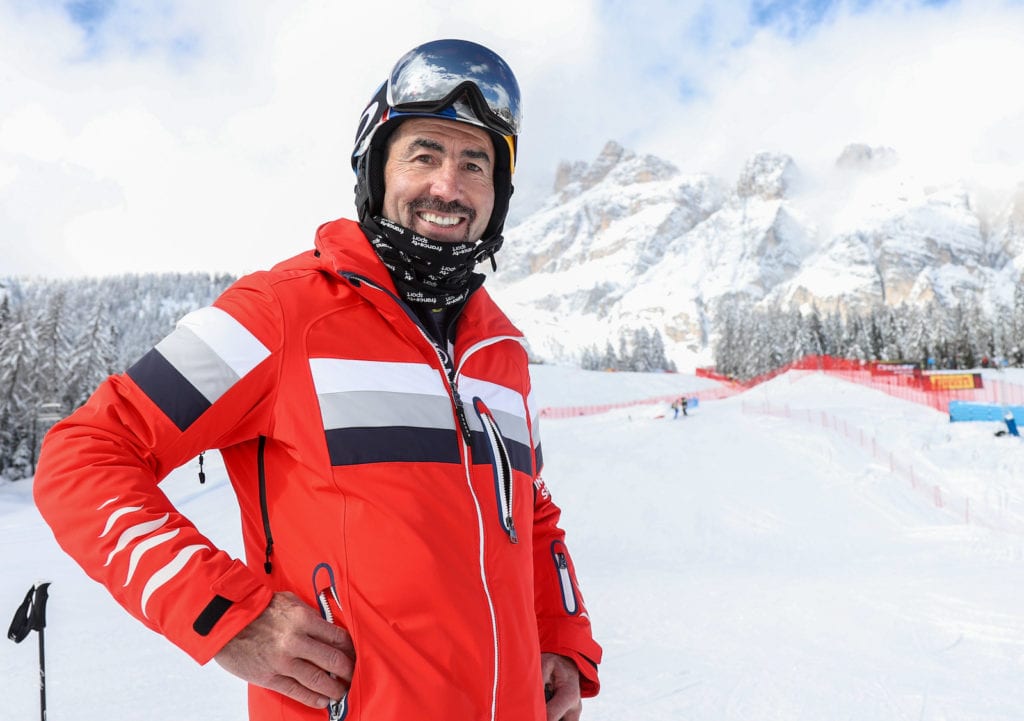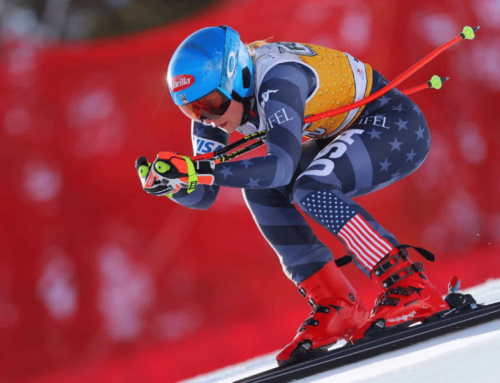After Saturday improvements, jury still out on men’s Vertigine downhill
An improved course set eased criticism; however, many racers are still not pleased with the test that the Vertigine downhill presents.
Numerous racers, notably Christof Innerhofer and Bryce Bennett, bashed an overly turny setup and lack of air time that five jumps present following Friday’s first downhill training. Opinions were somewhat more measured about a modified course following the second training on Saturday afternoon, ahead of Sunday’s world championship downhill.
Italian favorite Dominik Paris clocked the fastest training time on Saturday, descending the 2,610-meter course in 1:39.57. Paris also posted the quickest time on Friday, however he was one of 11 of the top 30 racers who seemed puzzled and missed gates.
“They opened some gates and now it’s much better – now you can turn with the speed,” Paris said. “We had problems yesterday, but today’s is better, so let’s go for the show tomorrow.”
Paris, who won his 15th career downhill in Garmisch-Partenkirchen eight days ago, concedes that Vertigine does not impose fear, despite its name, which translates to vertigo in English.

“I’m more for the tough downhills – Bormio or Kitzbuehel – but if you want to be a good skier, you have to ski everything.”
The more technical, and safer course set on Vertigine, seemed appropriate considering that last season’s World Cup Finals, essentially a test event, were canceled due to the coronavirus outbreak. The Italian National Championships were squeezed in.
After his initial adventure down Vertigine, Bennett called the new course “an absolute disaster” and “atrocious.” He said the middle section was “a joke.”
Bennett was a bit calmer after his second training run, in which he finished 14th, improving upon his 28th, the day prior.

“The safety issue – it’s a tough one for me because we’re skiing downhill,” Bennett said, after Saturday’s run. “I get it – you can’t make stupid decisions with course setting.
“They made some adjustments – I wouldn’t say it’s perfect, but it’s skiable now,” said the Squaw Valley racer, in his first visit to Cortina.
Innerhofer, contrary to his Italian teammate Paris, is still not sold on Vertigine’s merits after a second training run.
“They changed a lot, now we can say it’s skiable at least,” Innerhofer said. “The snow is still aggressive, but there are no more jumps, just bumps.

“It’s not a tactical race – I hope tomorrow the snow will be colder, since we start earlier.”
Defending world downhill champion Kjetil Jansrud came across as the voice of reason.
“In one way I’m a technical racer, so putting in turns is good for me, on the other hand I totally agree with those yesterday that said this is not a real downhill because of all the chicanes before the first jump,” said the veteran Norwegian.
“I also agree with FIS about why we set it that way yesterday, to make sure we don’t do anything stupid safety-wise. They eased up today and it flows better.
“It’s still a question of a hill that has been designed in a weird way to be a downhill.”
Travis Ganong noted the course improvements, including changing the time of course inspection to move it closer to Saturday’s training run, all of which came about following a productive call between athlete representatives and the FIS.
“They listened to us – it’s been fun to feel like we have a voice, to get together as athletes,” Ganong said. “It’s important that the athletes on the ground have their voices heard.”

Ganong’s teammate Jared Goldberg gives Vertigine a thumbs up, comparing the staircase climb to the precipitous start to ‘Freefall’ in St. Moritz.
“It’s an obstacle course,” said the Utah racer, competing at his third world championship. “The turny sections don’t flow amazing, but today it skied better. You have to muscle it so hard to make those turns and it doesn’t feel natural.
Drama on the Ghedina Jump
The signature Ghedina Jump, honoring Italian downhill star Kristian Ghedina, is not living up to its lofty expectations, according to the outspoken Cortina local.
“Coming into the jump, it was very slow and everybody was very angry,” Ghedina said. “This jump with my name – I don’t want the name when the jump is so small.

“Of course, it’s a problem,” said Ghedina, perhaps being over dramatic. “It’s better if I ask them to cancel my name for the jump because they are only jumping 20 meters.”
Ghedina, who won 13 World Cup downhills, his first coming in Cortina in 1990, explained that he experimented launching off the jump ten days ago, amassing ample speed and soaring a satisfying distance.
“They put the gates more direct and me, 50 years old without any training, and I jumped 50-meters. After my jump, I went 136 kilometers-per-hour.
“Why don’t they put it the same way,” Ghedina asks. “They want it to be safer.”
Lucky Luc’s Analysis
Former overall World Cup champ and French TV commentator Luc Alphand served up his assessment of the course setting dilemma, referencing similar difficulties with the 1992 Olympic downhill on the highly technical Face de Bellevard course in Val d’Isere France.
“We have to find a good balance between safety, racers pleasure to ski and also what you show to the viewers,” Alphand said. “We need to see some skiers jumping, going fast and not struggling on the turny gates.”

Alphand – who also won a bronze medal at the 1996 Sierra Nevada world championship downhill – believes tomorrow’s downhill is very open.
“I think Kriechmayr can do it again because he was so smart, powerful and smooth,” Alphand said, of the Austrian super-G winner. “Now he has no pressure, so he can be dangerous.
“But you can never forget the Italian Dominic Paris, then Feuz, then it’s wide open.”
The Tomba Jump?
With a third-straight sun-drenched day in the forecast for Cortina; racers learning, adjusting and improving tactics in what appears to be an unpredictable event, and an overwhelming Italian passion and spirit permeating throughout the 1956 Olympic resort; there is optimism for an intriguing and memorable race.
Whether or not Ghedina will enjoy his ‘passegiata’ (early evening stroll) with a smile around Cortina after tomorrow’s race, remains to be seen.
No truth to the rumor that his jump will be re-named after Alberto Tomba.
Follow Brian on Twitter at @brian_pinelli





















